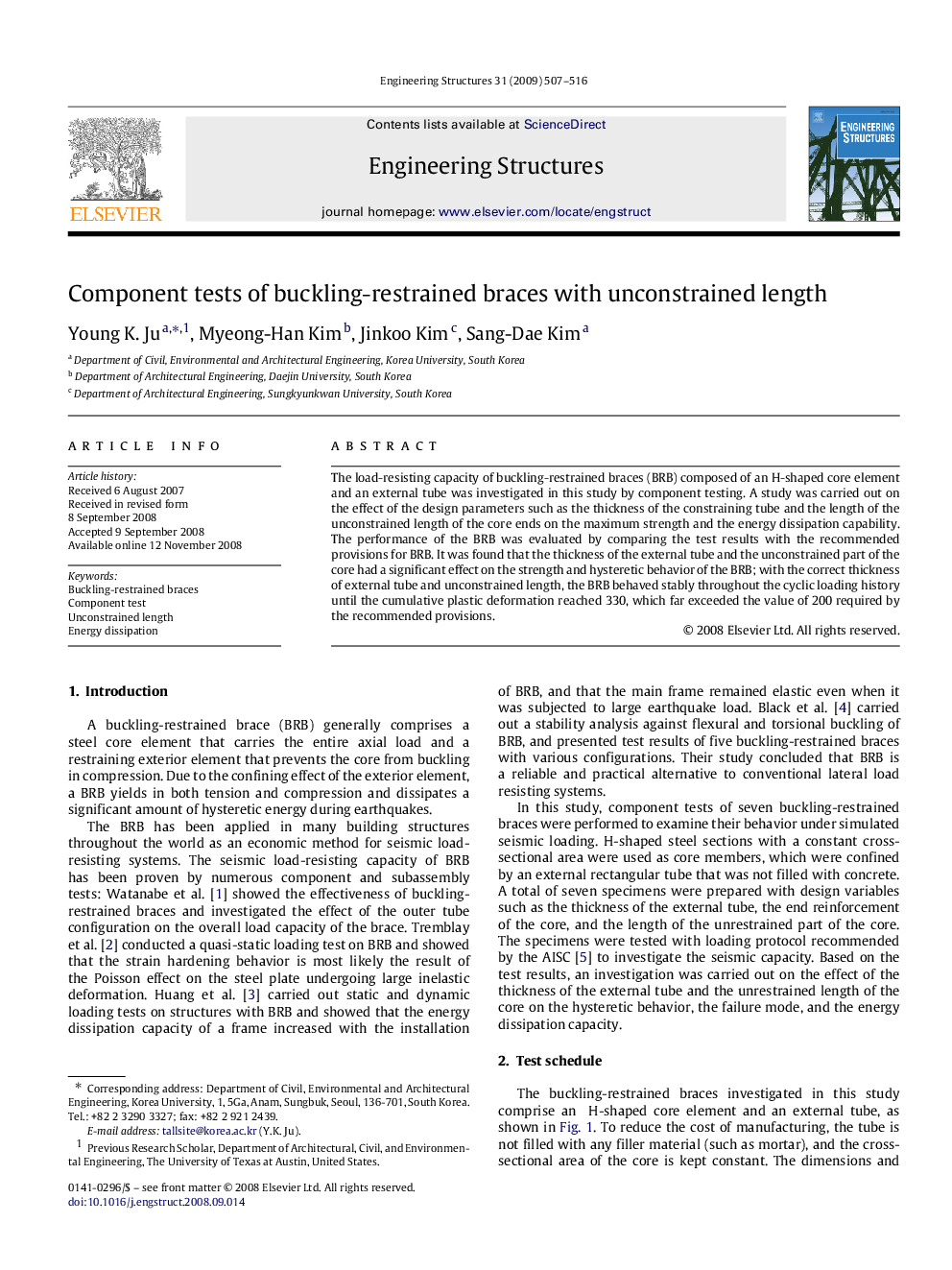| Article ID | Journal | Published Year | Pages | File Type |
|---|---|---|---|---|
| 268888 | Engineering Structures | 2009 | 10 Pages |
The load-resisting capacity of buckling-restrained braces (BRB) composed of an H-shaped core element and an external tube was investigated in this study by component testing. A study was carried out on the effect of the design parameters such as the thickness of the constraining tube and the length of the unconstrained length of the core ends on the maximum strength and the energy dissipation capability. The performance of the BRB was evaluated by comparing the test results with the recommended provisions for BRB. It was found that the thickness of the external tube and the unconstrained part of the core had a significant effect on the strength and hysteretic behavior of the BRB; with the correct thickness of external tube and unconstrained length, the BRB behaved stably throughout the cyclic loading history until the cumulative plastic deformation reached 330, which far exceeded the value of 200 required by the recommended provisions.
